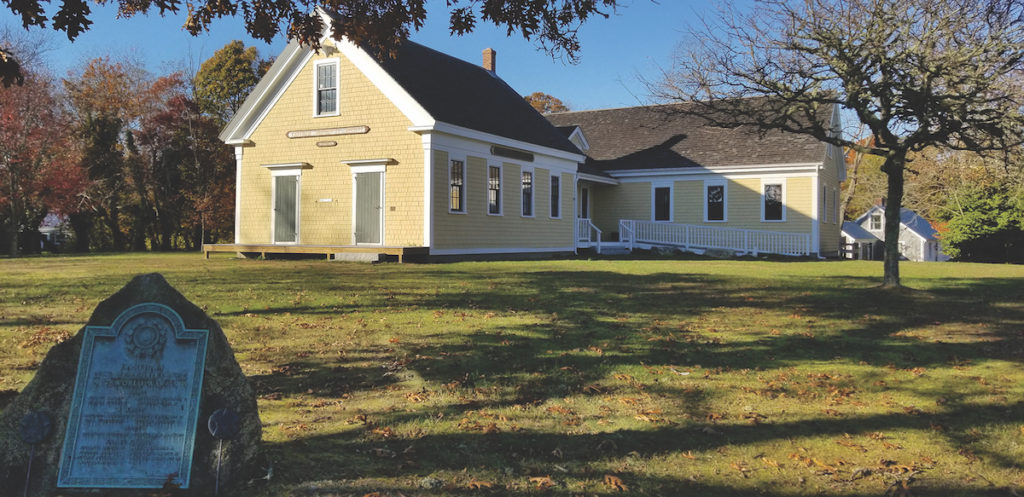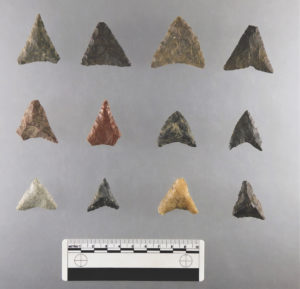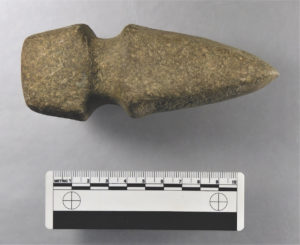
EASTHAM — While working to create a display as part of this year’s 400th anniversary of the Mayflower’s arrival on Cape Cod, volunteers at Eastham’s 1869 Schoolhouse Museum unearthed a trove of Native American artifacts that had been tucked away under the eaves, leading to the official designation of a new archeological site in Eastham.
“We wanted to do a balanced display,” said volunteer Patricia Donohoe of the museum’s plan to represent the Mayflower immigrants and the Cape’s indigenous people.

With just a few artifacts in its inventory of stone tools, the museum sought to expand that part of the display, eventually arranging for a loan of artifacts excavated from the National Park Service’s Carn’s Site on Coast Guard Beach. It was during a meeting with the park historian, recalled Donohoe, that museum president Eileen Seaboldt recognized that the park’s artifacts were similar to the items in cases stored under the museum building’s eaves.
After a visit to the Robbins Museum of Archaeology in Middleborough, the Eastham museum “knew they had something special,” said Donohoe. They also knew they would need to hire an archeologist to survey the collection.
A member of the Daughters of the American Revolution (DAR), Donohoe knew the organization had donated a case for the display. She went back to the DAR to ask for funding to hire an archaeologist. With a $1,000 DAR grant in hand, the museum hired archaeologist Dan Zoto.
“I like that the historical society was thinking about the people that were already here and wanting to highlight that history also,” said Zoto. “I think native people are underrepresented in the overall historical narrative. It was just neat to me with the timing, considering the Mayflower was the big highlight, that they went in a different direction.”
His survey of the 533 stone artifacts identified pieces from as far back as 9,500 to 10,000 years ago, including the Henry R. Guild collection that contained 48 artifacts, ranging from 3,500 years ago to the early 17th century, gathered from Guild’s property along the Salt Pond Creek in Eastham.
While unprovenanced artifacts can be used as teaching tools or displays, they have limited scientific value and not a lot can be learned about the past from them, said Zoto.
“The most important part of the project for me was that we were able to determine where one of the subcollections came from and we were able to put a new archeological site on the map,” Zoto said. “We were able to say this piece of property was inhabited rather intensely for the last 3,500 years.”
One of the collections was found to contain grave goods — items buried with a body. Zoto confirmed through documentation that the collector who gathered them had excavated at a Native American burial site in the 1930s.

“With that information, we reached out to the Mashpee Wampanoag Tribe and informed them of our discoveries, and they were in the loop from then on,” said Zoto. “Eventually those artifacts will be given back to the tribe, which I think is important.”
The grave goods were considered culturally sensitive and that is why they are not going to be part of the final display, he explained.
While the museum remains closed to the public due to the pandemic, the Eastham Historical Society has a video presentation by Zoto available on its website at easthamhistoricalsociety.org/past-event.



